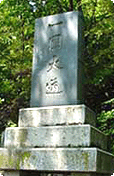Thoughts of Won Buddhism
Since Won-Buddhism has the image of Buddhism from its name, it is sometimes understood as a sect or a new sect of Buddhism.
However, Won-Buddhism, which originated from Sotaesan’s enlightenment, has operated an independent doctrinal system and religious organization separate from Buddhist religious orders from the beginning.
After Sotaesan attained enlightenment, he read the scriptures of various religions. He asserted that all religious doctrines were one, saying that his realization had already been realized by sages in the past, and that the truth of all religions was one, but that they only practiced different religions according to the historical conditions of each era and region.
And among the various religions, the truth of Buddhism is the most expansive and suitable for edifying the masses, so he said that he set his source as Shakyamuni Buddha and expressed his aspirations to establish a new religion in a new era centered on Buddhism in the future.

1) Ilwon-sang truth that aims for unity
Sotaesan expressed his state of enlightenment as a one-dimensional image, which he said was the fundamental truth of the universe that all sages had already realized. Since the ultimate truth does not exist in form, it is difficult to explain in words or writing, but the closest explanation is that it is a one-dimensional image.
Sotaesan said about Ilwon-sang, ‘the origin of all things in the universe, the spirit of all the Buddhas and the world, and the origin of all sentient beings’. Therefore, in Won-Buddhism, the truth of Ilwon is taken as the object of faith and the model of practice. Therefore, Won-Buddhism’s faith is explained not as personal faith, but as faith in the truth itself. In addition, the truth of Ilwon is the truth realized by all saints, and all religions in the world are explained in terms of unreligious ways, saying that the truth is one and the purpose is the same (Uniwonism, Ilwondaedo).
2) The idea of coexistence and harmony
Sotaesan explains that the basis for the survival of humans and all things comes from the relationship of mutual grace. Human beings are the product of the coexistence and harmony of all things in the universe (Chun Ji-eun), the result of being born, raised, and educated by parents (Parents), in mutual relationships with all people around them (Dongpo-Eun), in the order and system of customs and laws ( Since the law is something that can lead a life, Won-Buddhism defines human life as the product of heaven and earth, parents, compatriots, and the law. Therefore, it is said that the true way of life is the way to repay the grace of gratitude, and the way to repay is to follow the way of gratitude.
In addition, as virtues to reform our society into such social relations of reciprocation, he suggested the four virtues of cultivating self-reliance, intellectual capital, education of other children, and worshiping conciliators, and emphasized the practice of these four virtues.
3) Temporal ideal world – material and mental transformation
It is explained that the motive for the establishment of Won Buddhism was the decline of the human spirit caused by the development of material civilization.
In order to overcome this, it is said that mental transformation is necessary and the independence of the human spirit must be established to escape from the slave life of material civilization and become the master of material civilization.
This, he said, could create a vast and immeasurable paradise, a truly civilized world in which both material and spiritual civilizations were equally developed.
This can be said to be an alternative to overcome the positive aspects that the industrial revolution and the development of capitalism brought to mankind and the reality of materialism and human alienation that resulted from them. The specific content of the mental transformation for the restoration of humanity is ‘faith in truthful religion’ and ‘training in realistic morality’, and the method is presented as three learnings. The three learnings are ‘mental training’, ‘research of reason’, and ‘work cooking’, which means training for mental stability, research through work and reason, and resolute action for justice and injustice. In Won Buddhism, the course of action that integrates all of these things is called ‘mind study’.
The ideal world that Won-Buddhism aims for is not the world after death, but the world of the world. The immeasurable paradise of Won-Buddhism is to achieve in this world a world in which all human beings equally possess the achievements of material civilization accumulated by all human beings and an affluent life of coexistence and harmony is guaranteed.
4) The History of the Later Heaven Gaebyeok
The ideal world that Won-Buddhism aims for is the realization of a new world to be achieved by human will. Sotaesan said that the new world of the coming of heaven is opening, and we are living in the turning point of that coming of heaven. “The world is now at a time when the dark night has passed and the bright sun is about to rise in the east.” It is said that the new world of the coming of the heavens is “the end of the young and dark era and the opening of a joyful and bright world.”
In addition, he emphasized the world of human equality by saying that Buddha lives in every house and everyone becomes Maitreya Buddha. He also argued that only mutually beneficial and harmonious relationships between social groups and nations can lead the progress and development of human history.
Therefore, in the new era of the Gaebyeok, ‘Buddhism is everywhere’, so it was said that ‘everything should be unfair’. In this respect, Won-Buddhism’s attitude toward human history can be said to have confidence in human beings and a prospect of infinite progress.

